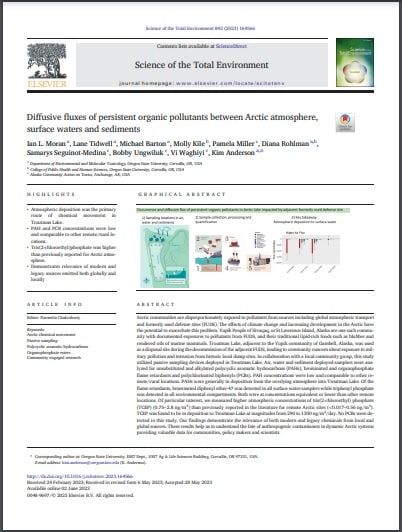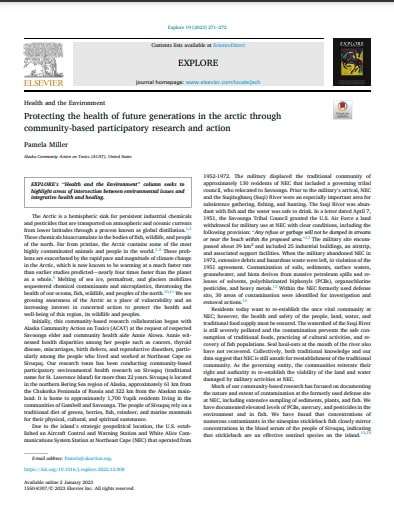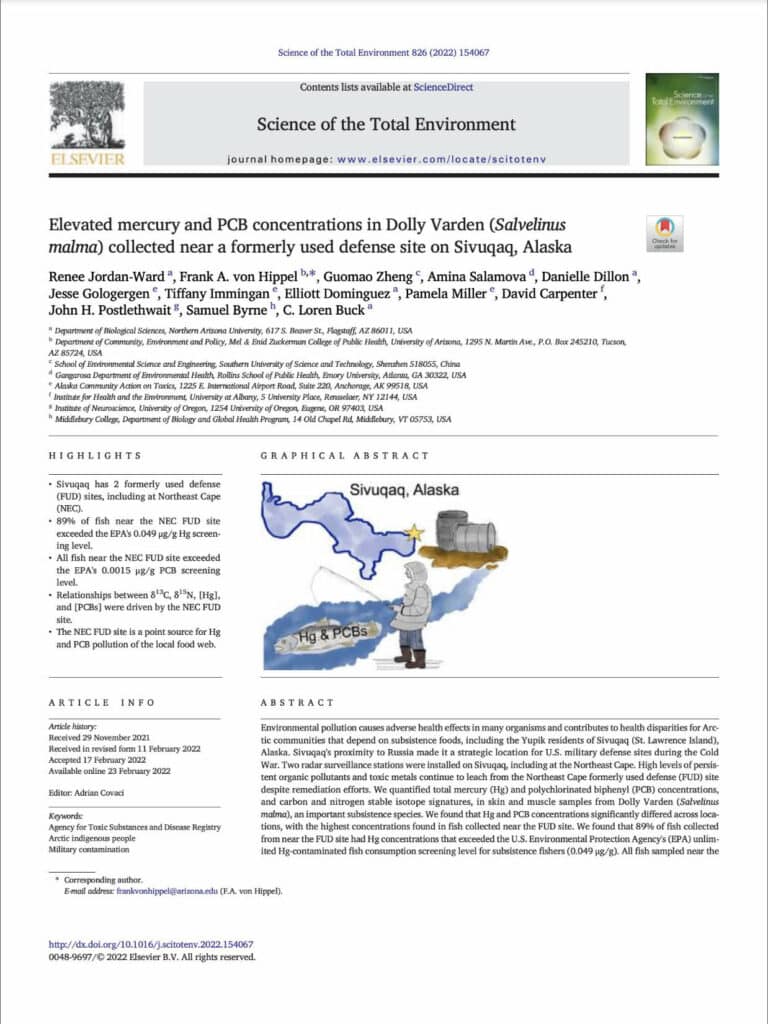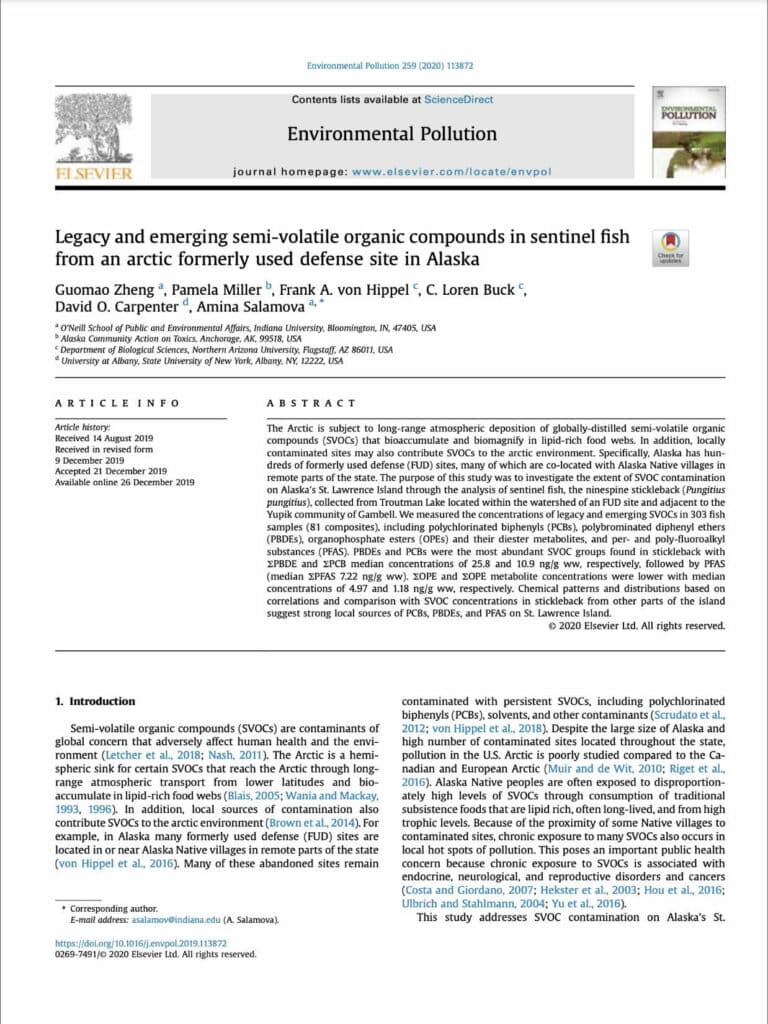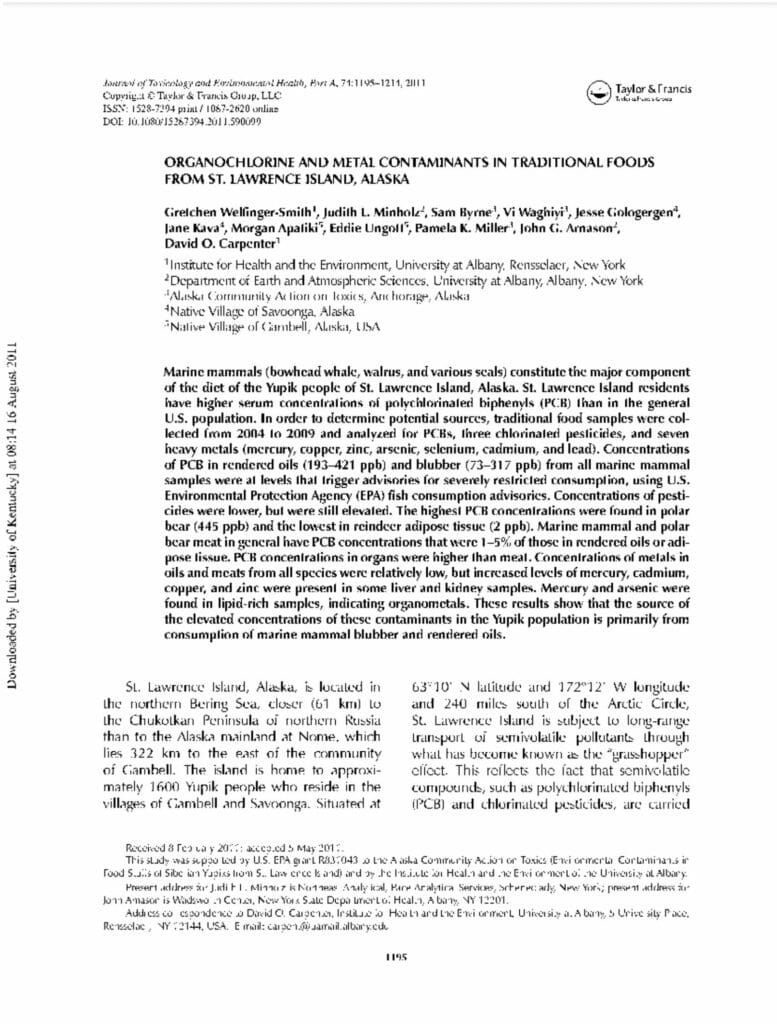Climate & Chemicals
Diffusive fluxes of persistent organic pollutants between Arctic atmosphere, surface waters and sediments
Arctic communities are disproportionately exposed to pollutants from sources including global atmospheric transport and formerly used defense sites (FUDS). The effects of climate change and increasing development in the Arctic have the potential to exacerbate this problem. Yupik People of Sivuqaq, or St Lawrence Island, Alaska are one such community with documented exposures to pollutants from FUDS, and their…
Read MoreProtecting the health of future generations in the arctic through community-based participatory research and action
The Arctic is a hemispheric sink for persistent industrial chemicals and pesticides that are transported on atmospheric and oceanic currents from lower latitudes through a process known as global distillation. These chemicals bioaccumulate in the bodies of fish, wildlife, and people of the north. Far from pristine, the Arctic contains some of the most highly…
Read MoreElevated mercury and PCB concentrations in Dolly Varden (Salvelinus malma) collected near a formerly used defense site on Sivuqaq, Alaska
Sivuqaq’s proximity to Russia made it a strategic location for U.S. military defense sites during the Cold War. Our results suggest that the Northeast Cape FUD site remains a significant point source of mercury and PCB pollution and contributes to higher concentrations in resident fish, including subsistence species. Moreover, elevated Hg and PCB levels in…
Read MoreLegacy and emerging semi-volatile organic compounds in sentinel fish from an arctic formerly used defense site in Alaska
The purpose of this study was to investigate the extent of contamination from military operations on Alaska’s St. Lawrence Island (Sivuqaq) through the analysis of sentinel fish, the ninespine stickleback (Pungitius pungitius), collected from Troutman Lake located within the watershed of a formerly used defense site and adjacent to the Yupik community of Gambell. The…
Read MoreOrganochlorine and Metal Contaminants in Traditional Foods from St. Lawrence Island, Alaska
St. Lawrence Island residents have higher serum concentrations of polychlorinated biphenyls (PCB) than in the general U.S. population. In order to determine potential sources, traditional food samples were collected from 2004 to 2009 and analyzed for PCBs, three chlorinated pesticides, and seven heavy metals (mercury, copper, zinc, arsenic, selenium, cadmium, and lead).
Read More
